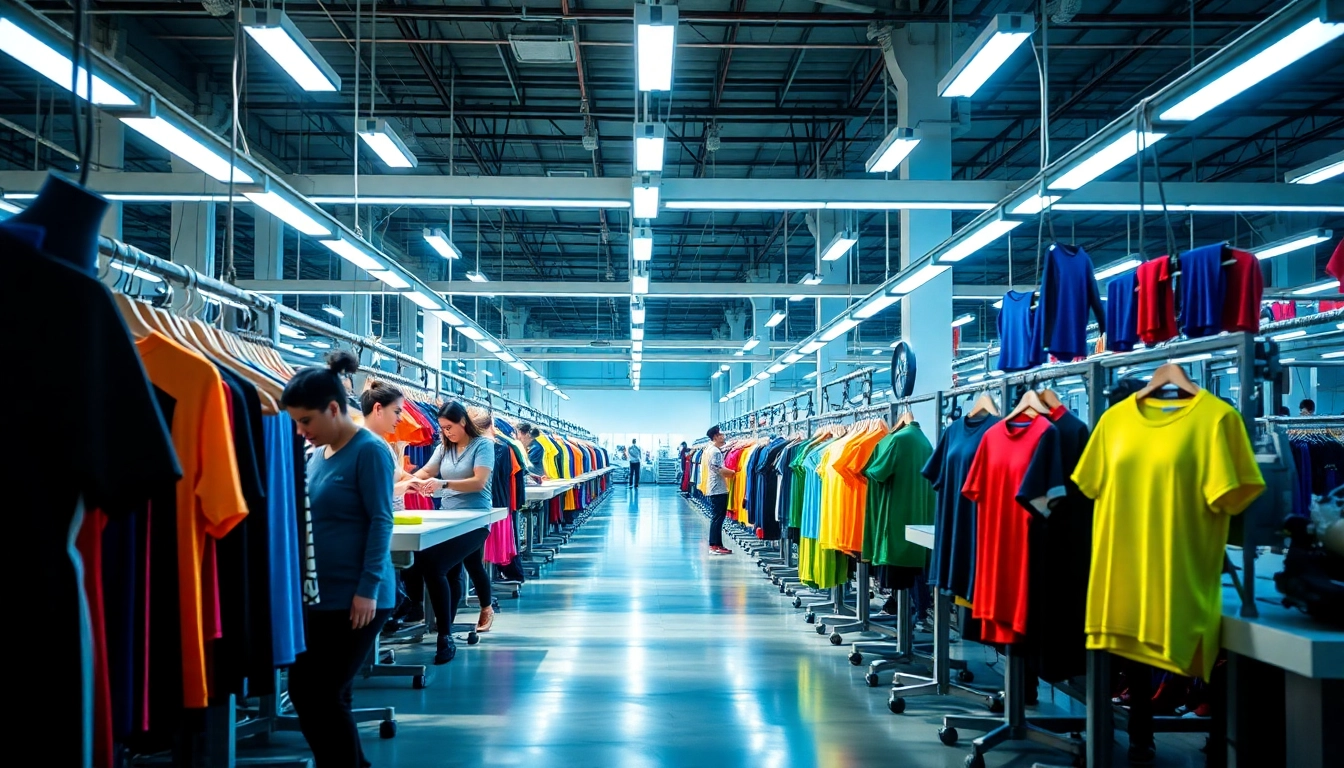Understanding the Role of a Sportswear Factory in Athletic Apparel Production
In the competitive world of sports and activewear, the backbone of high-quality athletic apparel lies in proficient manufacturing facilities known as sportswear factory. These factories are pivotal in translating designer concepts into tangible, durable, and performance-enhancing garments. A sportswear factory doesn’t just produce clothing; it encapsulates a blend of advanced technology, stringent quality standards, and an in-depth understanding of athletic needs, ensuring that each product aligns with the brand’s vision and consumer expectations.
What Defines a Sportswear Factory?
A sportswear factory is a specialized manufacturing unit dedicated to the creation of sports-specific apparel. Unlike conventional apparel factories, sportswear factories focus on fabrics that support movement, moisture-wicking, durability, and comfort. They often incorporate innovative textile technologies such as compression fabrics, anti-odor treatments, and UV protection layers. These factories typically operate with advanced machinery like computerized cutting systems, fabric printing, and sewing automation to meet precise specifications and maintain consistent quality across batches.
Key Manufacturing Processes and Technologies
Successful sportswear manufacturing involves a variety of sophisticated processes:
- Material Selection and Fabric Innovation: Utilizing high-performance textiles that support athletic performance, such as polyester blends, nylon, and eco-friendly fabrics.
- Pattern Making and Cutting: Employing computer-aided design (CAD) systems to create precise patterns and automated cutting machines for minimal fabric waste.
- Sewing and Assembly: Using specialized sewing machines capable of handling stretch fabrics, flatlock stitching, and seamless designs for enhanced comfort.
- Printing and Embellishment: Applying sublimation printing, heat transfer, or embroidery to add branding and aesthetic appeal without compromising functionality.
- Finishing and Quality Control: Final inspection processes that test for durability, colorfastness, and proper fit, ensuring products meet international standards.
Standards for Quality and Compliance
Adhering to quality standards is non-negotiable in sportswear manufacturing. Leading factories comply with international certifications such as ISO 9001 for quality management and ISO 14001 for environmental management. They also ensure products meet safety standards relevant to targeted markets, such as CPSIA for North America or CE marking for European markets. Consistent quality control procedures, including fabric testing, strength testing, and color durability assessments, help mitigate returns and build brand trust.
Choosing the Right Sportswear Factory for Your Brand
Factors Impacting Factory Selection
Selecting a manufacturing partner is a strategic decision that impacts brand reputation and profitability. Key considerations include the factory’s credibility, technical expertise, production capacity, compliance with quality standards, and responsiveness. Transparency in communication, ethical labor practices, and the ability to meet deadlines are also critical factors.
Evaluating Production Capabilities and Capacity
Assessing a factory’s capabilities involves examining their machinery, technical skill level, and flexibility in handling various designs and materials. It’s essential to verify if the factory can scale up production for large orders or handle complex customization requirements. Visiting the facility, requesting sample products, and reviewing their process flow can provide clear insights into their operational efficiency.
Building Cost-Effective and Flexible Partnerships
Cost considerations go beyond unit price; factors such as minimum order quantities (MOQs), lead times, and logistics costs influence the overall expense. Establishing a factory relationship based on clear communication, mutual understanding of timelines, and shared quality expectations fosters flexibility, reduces rework, and enhances collaboration. Negotiating favorable terms without compromising quality is paramount.
Designing Custom Sportswear with a Factory’s Expertise
Design Inspirations and Trends in Sportswear
Innovative designs and rising trends greatly influence consumer choices. Current trends include minimalist aesthetics, bold color blocking, sublimation graphics, and sustainable materials. Collaborating with factories that have dedicated design teams or R&D departments can help translate creative ideas into technical specifications effectively.
Material Sourcing and Fabric Innovations
Understanding the textile options and sourcing sustainable fabrics is essential. Modern sportswear factories often have access to cutting-edge materials like recycled polyester, bamboo fibers, and moisture-wicking fabrics enhanced with antimicrobial treatments. These materials boost performance, sustainability, and consumer appeal.
Sample Development and Finalization
The sample development stage is critical for ensuring the design, fit, and functionality meet expectations. Effective communication of specifications and iterative testing allow for refinements before mass production. Trusted factories emphasize quick turnaround times and proactive feedback to streamline this process.
Optimizing Production: From Order to Delivery
Order Management and Lead Times
Efficient order management systems facilitate smooth processing from order placement to delivery. Clear communication channels, real-time tracking, and adherence to schedule are vital. Lead times vary based on complexity and order volume but should generally be transparent and manageable.
Quality Control and Inspection
Quality assurance procedures include inline inspections during manufacturing and final audits before shipment. Employing third-party inspectors can add an extra layer of verification, ensuring compliance with specified standards and reducing defects.
Logistics and Shipping Solutions
Streamlined logistics involve selecting reliable carriers and optimizing packaging to prevent damage. Many factories have established shipping partnerships that offer cost-effective solutions, whether by air, sea, or courier services, ultimately reducing time-to-market.
Future Trends in Sportswear Manufacturing and Factory Innovations
Sustainable and Eco-Friendly Manufacturing
Many modern factories are adopting eco-conscious practices, including waste reduction, utilizing renewable energy, and sourcing recycled materials. Incorporating sustainability into manufacturing not only fulfills regulatory demands but also enhances brand image among environmentally conscious consumers.
Smart Technology Integration
The rise of wearable technology and smart fabrics is transforming the sportswear industry. Factories integrating sensors, moisture monitors, and sensor-embedded textiles are pioneering new frontiers of performance tracking and health monitoring, leading to more interactive and personalized athletic gear.
Adapting to Market and Consumer Demands
As consumer preferences evolve rapidly, factories focusing on agility, quick turnaround, and customization are at a competitive advantage. Incorporating flexible manufacturing systems and digital designs enables brands to respond swiftly to emerging trends and niche markets.

